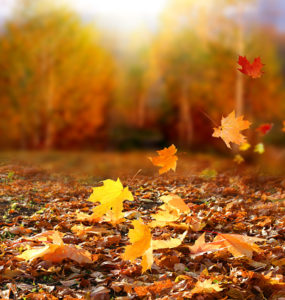Seasonal Fall Asthma and Allergies

Fall is the season of pumpkin spice, hay-rides, and colorful leaves. When you think of Fall, you usually don’t think of asthma and allergies. Even though it’s not Spring or Summer, you should still be aware that asthma and allergies could occur during Fall.
During the season of Fall, the main triggers of asthma and allergies are ragweed and outdoor molds. In the early Fall months, the pollen from ragweed, sagebrush, and tumbleweed are prevalent in the air. Ragweed grows almost everywhere, and blooms and releases pollen from August to November. These allergens can cause allergy symptoms in those people who are allergic to weeds. Outdoor molds can also become airborne and illicit an allergic response in people allergic to molds. Even though mold activity tends to be higher in the warm and humid months, as the leaves change color and fall to the ground, they can accumulate and keep mold spores into the Fall. Since these allergens can easily get into the air, they can make their way into homes and work places. That’s why it’s important to be aware that even though it’s not spring or summer, you can still have allergy symptoms.
Fall Allergy and Asthma Symptoms
Symptoms of Fall allergies can include stuffy noses, sneezing, itchy eyes, drowsiness, fatigue, and sore throat. People with asthma are at risk since these allergens will often trigger respiratory symptoms, like coughing, wheezing, chest tightness or shortness of breath. If you have these symptoms, it might just be allergies instead of a cold in these cooler months. It’s important to see your allergist or doctor to identify exactly what weeds and or molds that trigger your allergy.
Management of Fall Allergy and Asthma Symptoms
There are a few things you can do to help you keep symptoms from bothering you. For one, you can research the pollen and mold counts in your area. The local weather forecasts will usually report both mold and pollen counts during this time of year. You can also try to stay indoors as much as possible when there are high pollen and mold counts. You can keep your windows closed and the air conditioner on when you’re inside the house or in your car. There are also medications that can help manage your asthma and allergy symptoms. There are oral antihistamines that you can buy over the counter that work directly on the allergic response. Nasal decongestant sprays can help relieve nasal symptoms, but only should be used short-term. Eye drops can also be used for your eyes to help alleviate eye irritation symptoms during this time.
For further treatment options and questions on asthma and allergies triggers and symptoms during the Autumn season, reach out to us. Our specialists at Allergy, Asthma, and Immunology Medical Group are experienced allergists and can help you with all your asthma and allergy management needs. Give us a call at 805-658-9500 today!



